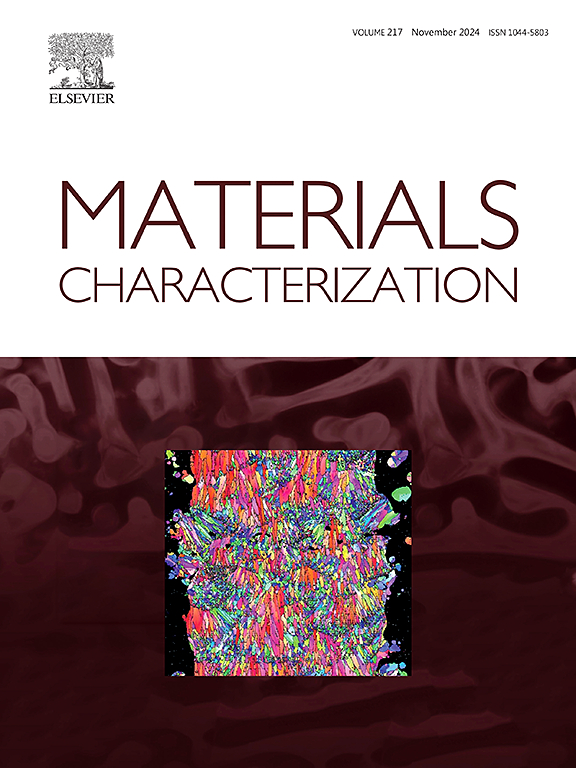Effect of strain rates on stress corrosion sensitivity of 7085-T7452 thick-plate friction stir welding joint
IF 4.8
2区 材料科学
Q1 MATERIALS SCIENCE, CHARACTERIZATION & TESTING
引用次数: 0
Abstract
The stress corrosion behavior of 7085-T7452 high-strength aluminum alloy base material (BM) and its friction stir welding (FSW) joints under varying strain rates during slow strain rate tensile (SSRT) was investigated. The results show that the stress corrosion sensitivity (ISSRT) of both the BM and FSW joints decreases with the increase of strain rate from 10−7 s−1 to 10−5 s−1. Moreover, the BM demonstrates lower ISSRT than the joints. The cracks in the joints exhibit dendritic paths along grain boundaries, with evidence of crack arrest marking (CAM) at localized areas in 3.5 wt% NaCl solution, suggesting both anodic dissolution and hydrogen-induced cracking simultaneously govern the propagation of stress corrosion cracks. There is the forced more test time in the slower strain rate, and the accumulation of stress corrosion coupling damage accelerates with the time, eventually leading to the greater degradation in the stress corrosion resistance and the higher ISSRT.
应变率对 7085-T7452 厚板搅拌摩擦焊接接头应力腐蚀敏感性的影响
研究了 7085-T7452 高强度铝合金母材(BM)及其搅拌摩擦焊(FSW)接头在慢应变速率拉伸(SSRT)过程中不同应变速率下的应力腐蚀行为。结果表明,随着应变速率从 10-7 s-1 增加到 10-5 s-1,BM 和 FSW 接头的应力腐蚀敏感性(ISSRT)都会降低。此外,BM 的 ISSRT 低于接头。在 3.5 wt% 的 NaCl 溶液中,接头中的裂纹沿晶界呈树枝状分布,局部区域还出现了裂纹阻止标记 (CAM),这表明阳极溶解和氢致裂纹同时控制着应力腐蚀裂纹的扩展。在应变速率较慢的情况下,测试时间被迫延长,应力腐蚀耦合损伤随时间的延长而加速积累,最终导致耐应力腐蚀性能的进一步退化和较高的 ISSRT。
本文章由计算机程序翻译,如有差异,请以英文原文为准。
求助全文
约1分钟内获得全文
求助全文
来源期刊

Materials Characterization
工程技术-材料科学:表征与测试
CiteScore
7.60
自引率
8.50%
发文量
746
审稿时长
36 days
期刊介绍:
Materials Characterization features original articles and state-of-the-art reviews on theoretical and practical aspects of the structure and behaviour of materials.
The Journal focuses on all characterization techniques, including all forms of microscopy (light, electron, acoustic, etc.,) and analysis (especially microanalysis and surface analytical techniques). Developments in both this wide range of techniques and their application to the quantification of the microstructure of materials are essential facets of the Journal.
The Journal provides the Materials Scientist/Engineer with up-to-date information on many types of materials with an underlying theme of explaining the behavior of materials using novel approaches. Materials covered by the journal include:
Metals & Alloys
Ceramics
Nanomaterials
Biomedical materials
Optical materials
Composites
Natural Materials.
 求助内容:
求助内容: 应助结果提醒方式:
应助结果提醒方式:


